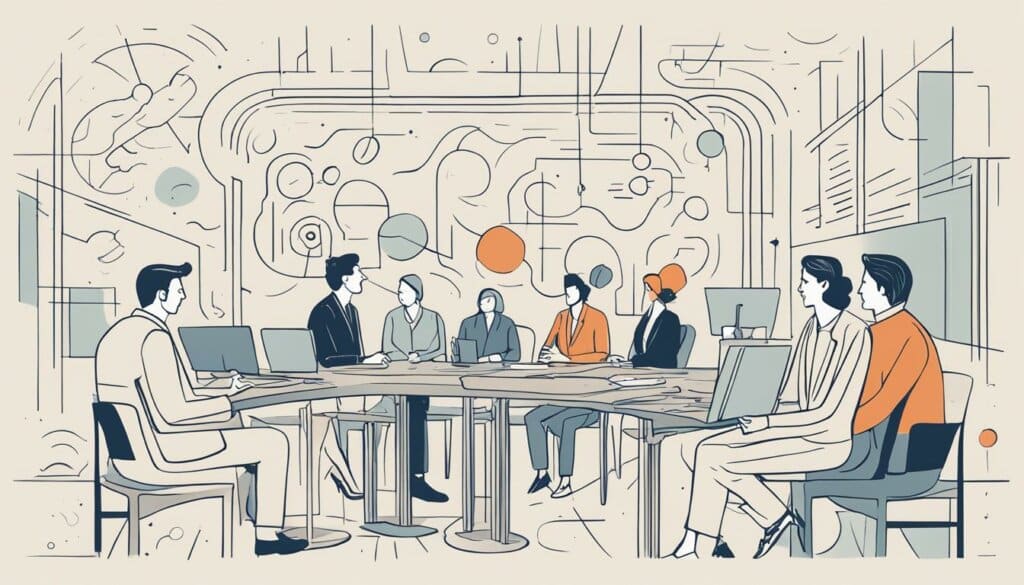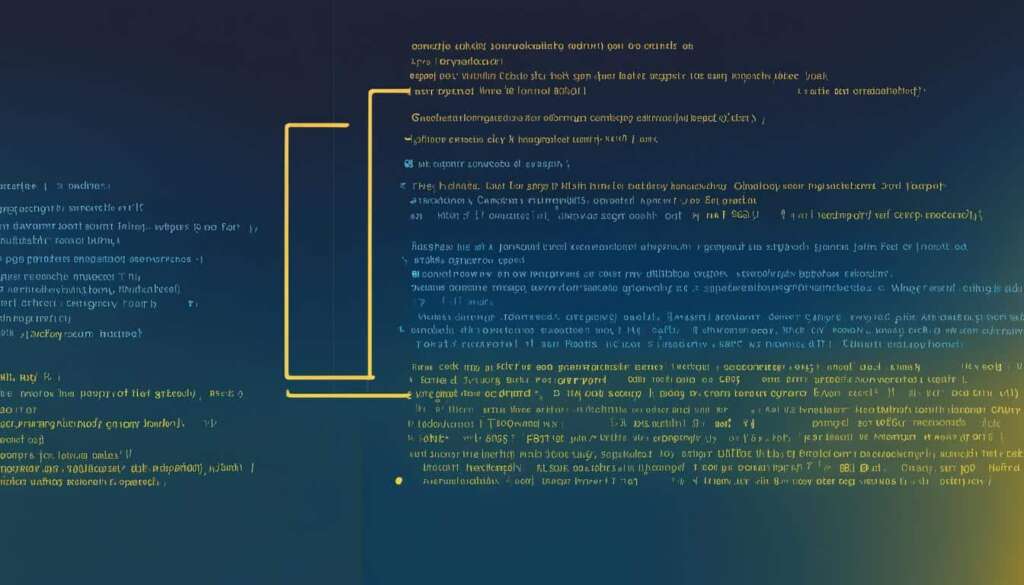Table of Contents
When it comes to powerful language models, ChatGPT developed by OpenAI is renowned for its impressive writing capabilities. Users are often curious about its potential to generate text and wonder how many pages ChatGPT can write. In this article, we will delve into the page limit and writing capacity of ChatGPT, shedding light on its capabilities and limitations.
Limitations in Input and Output Length
When it comes to the length of input and output, ChatGPT does have certain limitations. It cannot handle an entire novel’s worth of text as it may cause delays in response time and even result in errors. Similarly, ChatGPT is not designed to generate an entire novel. While it is capable of producing longer pieces of text, maintaining coherence and structure over extended lengths can be challenging.
Users need to be mindful of these limitations in order to optimize their experience with ChatGPT. Attempting to input excessively long documents or expecting the model to generate extremely lengthy outputs beyond its capabilities may lead to suboptimal results.
“ChatGPT has certain limitations with regards to the length of input and output. While it cannot handle an entire novel’s worth of text, it can generate longer pieces of text with some limitations on coherence and structure.”
— ChatGPT Research Team
As an AI language model, ChatGPT has certain restrictions in terms of page count, document length, page capacity, writing limit, and text length. Being aware of these constraints can help users manage their expectations and make the most effective use of ChatGPT’s capabilities.
Comparison of Input and Output Length Limits
| Input Length | Output Length |
|---|---|
| Up to a few pages of text | A few paragraphs to a few pages |
| Excessive text may result in slower response times and errors | Difficulties in maintaining coherence and structure beyond certain lengths |
It’s important to strike a balance between providing sufficient context to ChatGPT without overwhelming it with excessive text. This can help ensure more accurate and coherent responses from the model.
To better illustrate the limitations in input and output length, consider the following example:
- User Input: A 500-page document outlining the history of artificial intelligence
- ChatGPT Output: The model may struggle to respond effectively due to the extensive length of the input and the complexity of the topic. The resulting output may lack coherence and accuracy, requiring additional refinement and narrowing of focus.
While ChatGPT’s writing capabilities continue to impress, understanding its limitations in input and output length is crucial for maximizing its potential. By working within these bounds, users can obtain more refined and satisfactory results.
Lack of Context Understanding and Accuracy
Despite its advanced capabilities, ChatGPT may sometimes struggle with understanding complex contexts, such as sarcasm and humor. This can lead to inaccurate or inappropriate responses. Additionally, ChatGPT’s responses may not always be accurate, particularly when it comes to specialized or niche topics. It relies on the training data it has been provided, which may not include the most up-to-date information.
Limitations in Understanding Context
ChatGPT, while impressive in its language generation abilities, has limitations when it comes to understanding the nuances of context, such as sarcasm and humor. These aspects of communication heavily rely on contextual cues and subtle linguistic patterns, which can be challenging for the model to grasp. Consequently, its responses in such scenarios may be inaccurate or even inappropriate.
Accuracy and Specialized Topics
Another limitation of ChatGPT is its accuracy, particularly when handling specialized or niche topics. As an AI language model, it derives its responses from the training data it has been exposed to. However, this data may not cover the entire spectrum of specialized knowledge or the latest developments in various fields. Therefore, in situations where specific and up-to-date information is required, ChatGPT may fall short in delivering accurate responses.
“ChatGPT’s lack of context understanding and occasional inaccuracy pose important considerations for users who rely on precise and reliable information. It is crucial to be mindful of its limitations and verify the responses when dealing with complex contexts or specialized domains.”
OpenAI acknowledges these limitations and continues to work on refining ChatGPT’s context understanding and accuracy. Through ongoing research and development, efforts are being made to enhance its ability to grasp nuanced context and provide more accurate responses, thereby addressing these limitations.
| Limitation | Description |
|---|---|
| Context Understanding | Struggles with understanding sarcasm, humor, and complex contexts |
| Accuracy | May provide inaccurate responses, especially in specialized or niche topics |
Biases and Detrimental Responses
While ChatGPT has been trained to avoid biases in its output, there is a possibility that the underlying training data may contain biases or prejudices. This can result in the generation of discriminatory or harmful responses. It is important to remain cautious and verify information generated by ChatGPT to ensure accuracy and fairness.
Addressing Biases
OpenAI, the organization behind ChatGPT, understands the importance of addressing biases in AI systems. They have implemented techniques to reduce both glaring and subtle biases in ChatGPT’s responses. However, biases can still emerge due to the training data, which may reflect societal biases present in the text used to train the model. OpenAI continues to work on improving this aspect by investing in research and development.
“AI systems like ChatGPT are a reflection of the data they are trained on. It is our responsibility to minimize biases and create a more inclusive and diverse training set to improve the fairness and accuracy of the responses.”
Importance of Verification
Given the potential for biases and detrimental responses, it is crucial to verify the information generated by ChatGPT. This can be done by fact-checking or cross-referencing the responses with reliable sources. Taking a critical approach to the generated content helps mitigate the risks associated with biases and harmful information.
Addressing Harmful Responses
OpenAI has also implemented safety measures to prevent ChatGPT from generating harmful or inappropriate responses. They utilize a moderation system that helps filter out content that violates their usage policies. However, no system is perfect, and there may still be cases where harmful information slips through. Users are encouraged to report any concerning responses to OpenAI to help improve the system’s safety and accuracy.
By being aware of the potential biases and detrimental responses, and by actively verifying and cross-referencing the information generated by ChatGPT, users can ensure they are utilizing the tool responsibly and making informed decisions.
| Pros | Cons |
|---|---|
| Impressive language generation capabilities | Potential for biases and discriminatory responses |
| Continual development and improvement by OpenAI | Verification of generated content is necessary |
| Efforts to address biases in training data | Possibility of harmful information slipping through |
Limited Multimodal Capabilities
ChatGPT, being primarily a textual model, has its limitations when it comes to handling non-textual inputs and generating non-textual outputs. This means that it is unable to process images, URLs, audio, or any other non-textual inputs. Similarly, it cannot generate images, URLs, or audio outputs.
This limitation restricts ChatGPT’s ability to provide a fully immersive conversational experience. Users who expect multimodal interactions, involving non-verbal cues or visual content, may find ChatGPT’s capabilities limited in this regard.
“While ChatGPT excels in generating human-like text, it currently lacks the capability to comprehend and respond to non-textual inputs or produce non-textual outputs. This restricts its ability to provide a truly multimodal conversational experience.”
In a world where multimodal interfaces are becoming increasingly prevalent, ChatGPT’s limitations in this aspect may impact its usability in certain applications. For example, it may not be suitable for tasks that involve image analysis, video understanding, or audio processing.
It’s important to note that while ChatGPT may not have multimodal capabilities, there are other AI models and tools specifically designed to handle such inputs and outputs, providing a more comprehensive and immersive user experience.
As OpenAI continues to refine and enhance the capabilities of ChatGPT, it is possible that future iterations may incorporate multimodal features. However, as of now, it is essential to consider these limitations and explore alternative solutions where multimodal capabilities are necessary.

Key Takeaways
- ChatGPT is primarily a textual model and cannot handle non-textual inputs such as images, URLs, audio, etc.
- It cannot generate non-textual outputs like images, URLs, or audio.
- The lack of multimodal capabilities limits its ability to provide a fully immersive conversational experience.
- Alternative AI models and tools are available for tasks that require multimodal interactions.
- OpenAI may enhance ChatGPT’s capabilities in the future, but for now, its multimodal limitations should be considered.
Conclusion
In conclusion, ChatGPT showcases impressive writing capabilities, but it is important to acknowledge its limitations. While it cannot replace search engines like Google, ChatGPT presents great promise in various applications. However, users should be aware of its contextual understanding, accuracy, and biases. It’s crucial to exercise caution and verify information generated by ChatGPT to ensure accuracy and fairness.
Furthermore, ChatGPT has a page capacity limitation and lacks multimodal capabilities. It is primarily focused on textual inputs and outputs, restricting its ability to provide a fully immersive conversational experience and understand non-verbal cues or visual content.
OpenAI, the developer of ChatGPT, is actively working on improving its capabilities and addressing these limitations. As an AI language model, ChatGPT continues to evolve. Despite its limitations, ChatGPT offers a glimpse into the potential of AI-driven language models in the future, but it is important for users to make informed decisions when utilizing its services.
FAQ
How many pages can ChatGPT write?
ChatGPT’s page capacity is limited, and it is unable to generate an entire novel or handle an entire novel’s worth of text efficiently. While it can produce longer pieces of text, it may struggle to maintain coherence and structure over extended lengths.
What are the limitations in input and output length?
Users cannot feed in an entire novel’s worth of text as it may take a significant amount of time to respond and may even result in errors. Similarly, ChatGPT is unable to generate an entire novel. Its ability to maintain coherence and structure decreases over longer lengths, making it more challenging to handle lengthy inputs and outputs.
Does ChatGPT struggle with context understanding and accuracy?
ChatGPT may sometimes struggle with understanding complex contexts, such as sarcasm and humor. This can lead to inaccurate or inappropriate responses. Additionally, it may not always provide accurate information, particularly on specialized or niche topics, as it relies on the training data it has been provided, which may not include the most up-to-date information.
Are there risks of biases and detrimental responses from ChatGPT?
While ChatGPT has been trained to avoid biases in its output, there is a possibility that the underlying training data may contain biases or prejudices. This can result in the generation of discriminatory or harmful responses. It is important to remain cautious and verify information generated by ChatGPT to ensure accuracy and fairness.
What are the limitations of ChatGPT’s multimodal capabilities?
ChatGPT is primarily a textual model and is unable to handle images, URLs, audio, or any other non-textual inputs. Similarly, it cannot generate images, URLs, or audio outputs. This limitation restricts its ability to provide a fully immersive conversational experience and limits its understanding of non-verbal cues or visual content.
What is the conclusion regarding ChatGPT’s writing capabilities?
While ChatGPT’s writing capabilities are impressive, it has certain limitations. It is not designed to replace search engines like Google and may struggle with contextual understanding, accuracy, and biases. Its page capacity is also limited, and it lacks multimodal capabilities. However, OpenAI is actively working on improving its capabilities and addressing these limitations. As an AI language model, it shows great promise in various applications, but users should be aware of its limitations and make informed decisions when using it.


